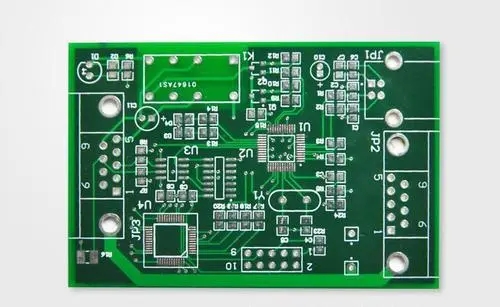During the evaluation, designers must ask themselves: What criteria are critical to them?

Let's look at some trends that force designers to re-examine the features of their existing development tools and start ordering some new features:
1.HDI
The increase in semiconductor complexity and the total amount of logic gates has required integrated circuits to have more pins and finer pin pitches. It is common today to design more than 2000 pins on a BGA device with a pin pitch of 1mm, not to mention arranging 296 pins on a device with a pin pitch of 0.65mm. The need for faster and faster rise times and signal integrity (SI) requires a larger number of power and ground pins, so it needs to occupy more layers in the multi-layer board, thus driving the high level of micro-vias. The need for density interconnection (HDI) technology.
HDI is an interconnection technology being developed in response to the above-mentioned needs. Micro vias and ultra-thin dielectrics, finer traces and smaller line spacing are the main features of HDI technology.
2.RF design
For RF design, the RF circuit should be directly designed as a system schematic diagram and system board layout, and not used in a separate environment for subsequent conversion. All the simulation, tuning and optimization capabilities of the RF simulation environment are still necessary, but the simulation environment can accept more primitive data than the "real" design. Therefore, the differences between the data models and the resulting design conversion problems will disappear. Firstly, designers can directly interact between system design and RF simulation; secondly, if designers perform a large-scale or quite complex RF design, they may want to distribute circuit simulation tasks to multiple computing platforms running in parallel, or They want to send each circuit in a design composed of multiple modules to their respective simulators, thereby reducing simulation time.
3. Advanced packaging
The increasing functional complexity of modern products requires a corresponding increase in the number of passive components, which is mainly reflected in the increase in the number of decoupling capacitors and terminal matching resistors in low-power, high-frequency applications. Although the packaging of passive surface mount devices has shrunk considerably after several years, the results are still the same when trying to achieve the maximum density. The technology of printed components makes the transition from multi-chip components (MCM) and hybrid components to SiP and PCBs that can be directly used as embedded passive components today. In the process of transformation, the latest assembly technology was adopted. For example, the inclusion of a layer of impedance material in a layered structure and the use of series termination resistors directly under the uBGA package greatly improve the performance of the circuit. Now, embedded passive components can be designed with high precision, eliminating the need for additional processing steps for laser cleaning of welds. Wireless components are also moving in the direction of improving integration directly in the substrate.
4. Rigid flexible PCB
In order to design a rigid flexible PCB, all factors that affect the assembly process must be considered. A designer cannot simply design a rigid flexible PCB like a rigid PCB, just as the rigid flexible PCB is just another rigid PCB. They must manage the bending area of the design to ensure that the design points will not cause the conductor to break and peel off due to the stress of the bending surface. There are still many mechanical factors to consider, such as minimum bend radius, dielectric thickness and type, metal sheet weight, copper plating, overall circuit thickness, number of layers, and number of bends.
Understand rigid flexible design and decide whether your product allows you to create a rigid flexible design.
5. Signal integrity planning
In recent years, new technologies related to parallel bus structure and differential pair structure for serial-parallel conversion or serial interconnection have been continuously advanced.
Types of typical design problems encountered in a parallel bus and serial-to-parallel conversion design. The limitation of parallel bus design lies in system timing changes, such as clock skew and propagation delay. Due to the clock skew on the entire bus width, the design for timing constraints is still difficult. Increasing the clock rate will only make the problem worse.
On the other hand, the differential pair structure uses an exchangeable point-to-point connection at the hardware level to realize serial communication. Usually, it transfers data through a one-way serial "channel", which can be superimposed into 1-, 2-, 4-, 8-, 16-, and 32-width configurations. Each channel carries one byte of data, so the bus can handle data widths from 8 bytes to 256 bytes, and data integrity can be maintained by using some forms of error detection techniques. However, due to the high data rate, other design issues have arisen. Clock recovery at high frequencies becomes the burden of the system, because the clock needs to quickly lock the input data stream, and in order to improve the anti-shake performance of the circuit, it is necessary to reduce the jitter from cycle to cycle. Power supply noise also creates additional problems for designers. This type of noise increases the possibility of severe jitter, which will make eye opening more difficult. Another challenge is to reduce common mode noise and solve the problems caused by the loss effects of IC packages, PCB boards, cables and connectors.
6. Practicality of the design kit
Design kits such as USB, DDR/DDR2, PCI-X, PCI-Express and RocketIO will undoubtedly help designers to enter the new technology field. The design kit gives an overview of the technology, a detailed description, and the difficulties that the designer will face, followed by simulation and how to create wiring constraints. It provides explanatory documents together with the program, which provides designers with an opportunity to master advanced new technologies.
It seems that it is easy to get a PCB board tool that can handle the layout; but it is crucial to get a tool that not only satisfies the layout but also solves your urgent needs.